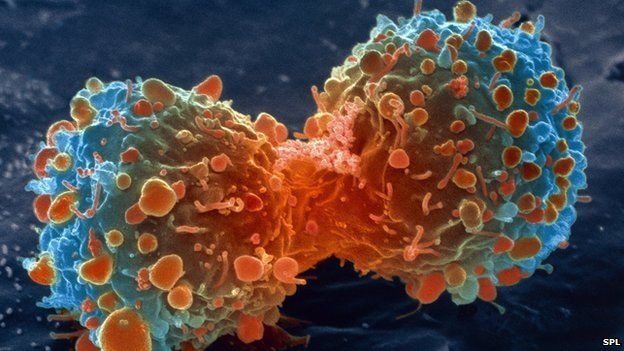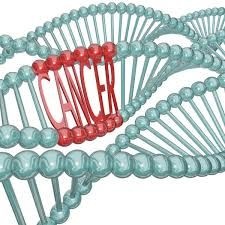What Cancer is?

Cancer is the uncontrolled growth of cells, which can invade and spread to distant sites of the body. Cancer can have severe health consequences, and is a leading cause of death. Lung, prostate, colorectal, stomach, and liver cancer are the most common types of cancer in men, while breast, colorectal, lung, uterine cervix, and stomach cancer are the most common among women. More than 30% of cancer deaths could be prevented by modifying or avoiding key risk factors, especially tobacco use. Early detection, accurate diagnosis, and effective treatment, including pain relief and palliative care, help increase cancer survival rates and reduce suffering. Treatment options include surgery, chemotherapy and radiotherapy, tailored to tumour stage, type and available resources. Comprehensive cancer control plans are needed to improve cancer prevention and care, especially in low-income and middle-income countries.
Cancer prevention:
At least one-third of all cancer cases are preventable. Prevention offers the most cost-effective long-term strategy for the control of cancer.
Tobacco
Tobacco use is the single greatest avoidable risk factor for cancer mortality worldwide, causing an estimated 22% of cancer deaths per year. In 2004, 1.6 million of the 7.4 million cancer deaths were due to tobacco use.
Tobacco smoking causes many types of cancer, including cancers of the lung, oesophagus, larynx (voice box), mouth, throat, kidney, bladder, pancreas, stomach and cervix. About 70% of the lung cancer burden can be attributed to smoking alone. Second-hand smoke (SHS), also known as environmental tobacco smoke, has been proven to cause lung cancer in nonsmoking adults. Smokeless tobacco (also called oral tobacco, chewing tobacco or snuff) causes oral, oesophageal and pancreatic cancer.
Physical inactivity, dietary factors, obesity and being overweight
Dietary modification is another important approach to cancer control. There is a link between overweight and obesity to many types of cancer such as oesophagus, colorectum, breast, endometrium and kidney. Diets high in fruits and vegetables may have a protective effect against many cancers. Conversely, excess consumption of red and preserved meat may be associated with an increased risk of colorectal cancer. In addition, healthy eating habits that prevent the development of diet-associated cancers will also lower the risk of cardiovascular disease.
Regular physical activity and the maintenance of a healthy body weight, along with a healthy diet, will considerably reduce cancer risk. National policies and programmes should be implemented to raise awareness and reduce exposure to cancer risk factors, and to ensure that people are provided with the information and support they need to adopt healthy lifestyles.
Alcohol use
Alcohol use is a risk factor for many cancer types including cancer of the oral cavity, pharynx, larynx, oesophagus, liver, colorectum and breast. Risk of cancer increases with the amount of alcohol consumed. The risk from heavy drinking for several cancer types (e.g. oral cavity, pharynx, larynx and oesophagus) substantially increases if the person is also a heavy smoker.
Attributable fractions vary between men and women for certain types of alcohol-related cancer, mainly because of differences in average levels of consumption. For example, 22% of mouth and oropharynx cancers in men are attributable to alcohol whereas in women the attributable burden drops to 9%. A similar sex difference exists for oesophageal and liver cancers (Rehm et al., 2004).
Infections
Infectious agents are responsible for almost 22% of cancer deaths in the developing world and 6% in industrialized countries. Viral hepatitis B and C cause cancer of the liver; human papillomaVIRUS INFECTION causes cervical cancer; the bacterium Helicobacter pylori increases the risk of stomach cancer. In some countries the parasitic infection schistosomiasis increases the risk of bladder cancer and in other countries the liver fluke increases the risk of cholangiocarcinoma of the bile ducts. Preventive measures include vaccination and prevention of infection and infestation.
causes cervical cancer; the bacterium Helicobacter pylori increases the risk of stomach cancer. In some countries the parasitic infection schistosomiasis increases the risk of bladder cancer and in other countries the liver fluke increases the risk of cholangiocarcinoma of the bile ducts. Preventive measures include vaccination and prevention of infection and infestation.
Environmental pollution
Environmental pollution of air, water and soil with carcinogenic chemicals accounts for 1–4% of all cancers (IARC/WHO, 2003). Exposure to carcinogenic chemicals in the environment can occur through drinking water or pollution of indoor and ambient air.
In Bangladesh, 5–10% of all cancer deaths in an arsenic-contaminated region were attributable to arsenic exposure (Smith, Lingas & Rahman, 2000). Exposure to carcinogens also occurs via the contamination of food by chemicals, such as aflatoxins or dioxins. Indoor air pollution from coal fires doubles the risk of lung cancer, particularly among non-smoking women (Smith, Mehta & Feuz, 2004). Worldwide, indoor air pollution from domestic coal fires is responsible for approximately 1.5% of all lung cancer deaths. Coal use in households is particularly widespread in Asia.
Occupational carcinogens
More than 40 agents, mixtures and exposure circumstances in the working environment are carcinogenic to humans and are classified as occupational carcinogens (Siemiatycki et al., 2004). That occupational carcinogens are causally related to cancer of the lung, bladder, larynx and skin, leukaemia and nasopharyngeal cancer is well documented. Mesothelioma (cancer of the outer lining of the lung or chest cavity) is to a large extent caused by work-related exposure to asbestos.
Occupational cancers are concentrated among specific groups of the working population, for whom the risk of developing a particular form of cancer may be much higher than for the general population. About 20–30% of the male and 5–20% of the female working-age population (people aged 15–64 years) may have been exposed to lung carcinogens during their working lives, accounting for about 10% of lung cancers worldwide. About 2% of leukaemia cases worldwide are attributable to occupational exposures.
Radiation
Ionizing radiation is carcinogenic to humans. Knowledge on radiation risk has been mainly acquired from epidemiological studies of the Japanese A-bomb survivors as well as from studies of medical and occupational radiation exposure cohorts. Ionizing radiation can induce leukaemia and a number of solid tumours, with higher risks at young age at exposure.
Residential exposure to radon gas from soil and building materials is estimated to cause between 3% and 14% of all lung cancers, making it the second cause of lung cancer after tobacco smoke. Radon levels in homes can be reduced by improving the ventilation and sealing floors and walls. Ionizing radiation is an essential diagnostic and therapeutic tool. To guarantee that benefits exceed potential radiation risks radiological medical procedures should be appropriately prescribed and properly performed, to reduce unnecessary radiation doses, particularly in children.
Ultraviolet (UV) radiation, and in particular solar radiation, is carcinogenic to humans, causing all major types of skin cancer, such as basal cell carcinoma (BCC), squamous cell carcinoma (SCC) and melanoma. Globally in 2000, over 200 000 cases of melanoma were diagnosed and there were 65 000 melanoma-associated deaths. Avoiding excessive exposure, use of sunscreen and protective clothing are effective preventive measures. UV-emitting tanning devices are now also classified as carcinogenic to humans based on their association with skin and ocular melanoma cancers.




